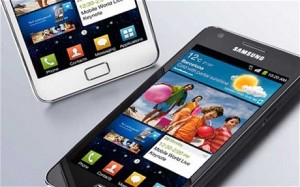 Samsung and Apple again traded places at the top of the smartphone market as Samsung came out on top in the first quarter of 2012, according to data from mobile analyst firm Juniper Research.
Samsung and Apple again traded places at the top of the smartphone market as Samsung came out on top in the first quarter of 2012, according to data from mobile analyst firm Juniper Research.
Juniper estimated that nearly 60% of the 139 million smartphones shipped worldwide during the first three months of 2012 carried either the Apple or Samsung brand – up from 46% in the last quarter of 2011.
While Apple and Samsung have taken it in turns to lead the smartphone market over the last year, it seems as if Samsung may now have established a firm lead in this space – shipping 11.8 million more units than Apple in Q1. Samsung shipped 46.9 million, with Apple trailing in second at 35.1 million.
With the iPhone launch craze now past, the analyst firm said it believes Samsung may hold onto its lead next quarter.
However, Daniel Ashdown, research analyst at Juniper, noted that Apple’s revenue from its mobile division continues to remain significantly higher than Samsung’s.
Apple’s iPhone revenue was $22.7 billion in Q1 ($29.3 billion including the iPad), compared with Samsung’s KRW18.9 trillion ($17 billion) from its entire mobile division.
While flagship devices the Samsung Galaxy SII and Galaxy Note contribute substantial unit volumes, the company’s rise to top spot is evidence of the smartphone’s entry into mass market price points with products like the Galaxy Y.
HTC, who have not released shipment volumes for the last two quarters, appears to be following Nokia and RIM in taking stock of where it’s best strategy lies.
Nokia’s Lumia launches do not appear to have kick-started a rival yet, with the Finnish company shipping just 11.9 million smart devices in the first quarter – less than half the number it shipped in the same period a year previous.
RIM’s recent results, which run to a different financial schedule, hint at continuing problems for the Canadian firm. However, with Juniper forecasting that smartphone shipments will nearly double over the next five years – from nearly 600 million in 2012 to 1.1 billion by 2017 – there are still plenty of opportunities for other players to make gains in this market.





